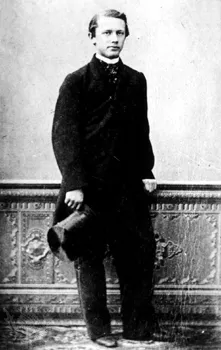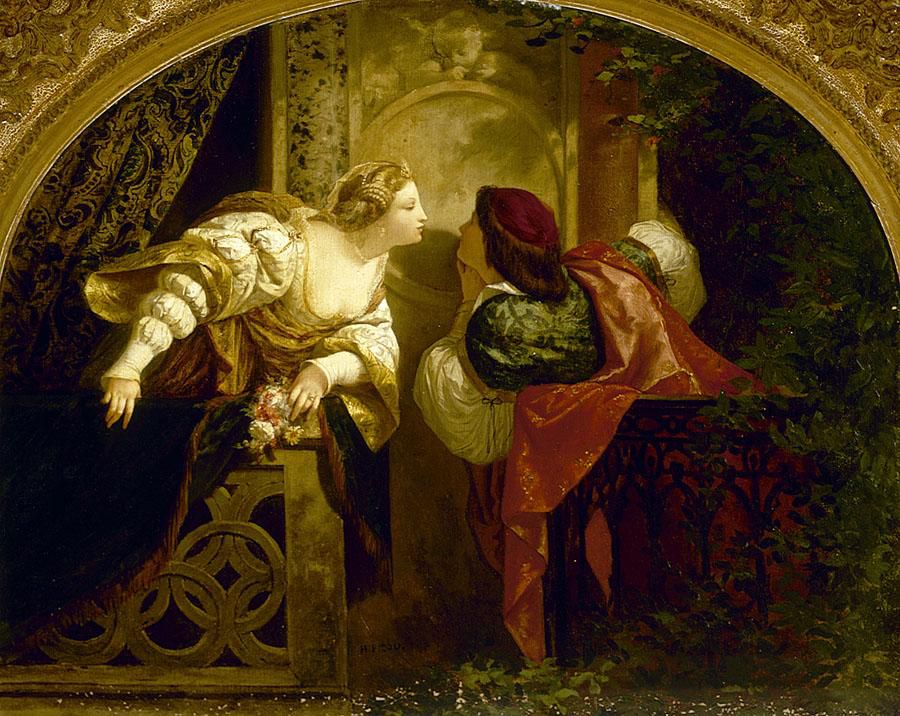In the lead-up to our flagship Youth Orchestra’s performance at AdYO’s Finale Celebration this weekend, alumna and intern Caitlin Mildren takes us behind the music of one of orchestral music’s most popular and enduring works.
Tchaikovsky’s Romeo and Juliet Fantasie-Overture is a beloved symphonic poem that beautifully captures the most tragic love story ever told – yet was almost never written at all.
In 1869, after hearing that his close friend Tchaikovsky was struggling with burnout, Mily Alekseyevich Balakirev, a fellow composer, suggested the tragedy of Romeo and Juliet as the inspiration for Tchaikovsky’s next composition.

A young Tchaikovsky in the early 1860s
At the time, the composer had been immersed in writing his opera Undine, before complaining to Balakirev that “he didn’t want to write to him until he had jotted down at least something of the overture, he was played out completely, and not a single tolerable musical idea would creep into his head.”
The piece itself ended up being revised not just once, but twice; the overture we know today being the most successful third version.
The first version, which featured a fugue and direct conflict of its two main themes, highlighted Tchaikovsky’s musical training at St Petersburg Conservatory, yet the piece was constantly sent back and forth between Moscow and St Petersburg, as Balakirev remained unsatisfied.
The premiere of the first version in 1870 faced a setback: an ongoing scandal occurring between the conductor, Tchaikovsky’s friend Nikolai Rubinstein, and a female student. However, an uproar in the conductor’s favour occurred when Rubinstein appeared on stage, the affair proving more interesting to the audience than the overture.
After the premiere, Tchaikovsky stated that “no one said a single word to him about the overture the whole evening. And yet he yearned so for appreciation and kindness.”
In 1880, Tchaikovsky rewrote the ending coda and gave the piece its final title of Overture-Fantasia, but the third and final version wasn’t premiered until 1886, under the baton of Mikhail Ippolitov-Ivanov.
In one letter, Balakirev responded to the love theme, writing to Tchaikovsky, “I play it often, and I want very much to hug you for it,” and the theme has been used in many pieces since, featuring in the Frank Sinatra song Our Love Is Like a Melody, and select excerpts were used in the 2005 ballet Anna Karenina, which features many selections from Tchaikovsky’s repertoire.

Other themes featured within the piece include the “Friar Lawrence Theme”, a chorale-like introduction suggested by Balakirev, written in F-Sharp minor. The theme is first heard in the clarinets and bassoons, before expanding through the strings.

Additionally, the ‘conflict’ theme of the Montagues and Capulets is highlighted multiple times throughout the piece, a stark contrast to both the Friar Lawrence theme and the love theme. Heavily carried by the strings and brass, the theme is repeated throughout the work, first in B minor and then in A minor, before returning for a final time in the original key.

The coda includes a variation on the love theme to close the work, the sweeping melody an allusion to the bittersweet ending of the tale.
Caitlin Mildren
AdYO Intern | Elder Conservatorium

